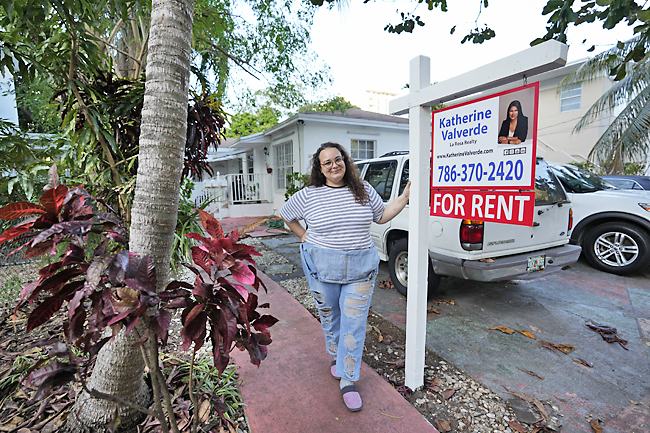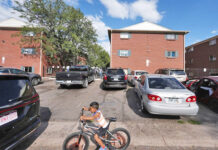AP – Krystal Guerra’s Miami apartment has a tiny kitchen, cracked tiles, warped cabinets, no dishwasher and hardly any storage space.
But Guerra was fine with the apartment’s shortcomings. It was all part of being a 32-year-old graduate student in South Florida, she reasoned, and she was happy to live there for a few more years as she finished her marketing degree.
That was until a new owner bought the property and told her he was raising the rent from USD1,550 to USD1,950, a 26 per cent increase that Guerra said meant her rent would account for the majority of her take-home pay from the University of Miami.
“I thought that was insane,” said Guerra, who decided to move out. “Am I supposed to stop paying for everything else I have going on in my life just so I can pay rent? That’s unsustainable.”
Guerra is hardly alone. Rents have exploded across the country, causing many to dig deep into their savings, downsize to subpar units or fall behind on payments and risk eviction now that a federal moratorium has ended.

In the 50 largest United States (US) metro areas, median rent rose an astounding 19.3 per cent from December 2020 to December 2021, according to a Realtor.com analysis of properties with two or fewer bedrooms. And nowhere was the jump bigger than in the Miami metro area, where the median rent exploded to USD2,850, 49.8 per cent higher than the previous year.
Other cities across Florida – Tampa, Orlando and Jacksonville – and the Sun Belt destinations of San Diego, Las Vegas, Austin, Texas, and Memphis, Tennessee, all saw spikes of more than 25 per cent during that time period.
Rising rents are an increasing driver of high inflation that has become one of the nation’s top economic problems. US Labor Department data, which covers existing rents as well as new listings, shows much smaller increases, but these are also picking up. Rental costs rose 0.5 per cent in January from December, the Labor Department said last week. That may seem small, but it was the biggest increase in 20 years, and will likely accelerate.
Economists worry about the impact of rent increases on inflation because the big jumps in new leases feed into the US consumer price index, which is used to measure inflation.
Inflation jumped 7.5 per cent in January from a year earlier, the biggest increase in four decades. While many economists expect that to decrease as pandemic-disrupted supply chains unravel, rising rents could keep inflation high through the end of the year since housing costs make up one-third of the consumer price index.
Things have gotten so bad in Boston, which has nearly overtaken San Francisco as the nation’s second-most expensive rental market, that one resident went viral for jokingly putting an igloo on the market for USD2,700 a month. “Heat/ hot water not included,” Jonathan Berk tweeted.
Experts said many factors are responsible for astronomical rents, including a nationwide housing shortage, extremely low rental vacancies and unrelenting demand as young adults continue to enter the crowded market.
Whitney Airgood-Obrycki, lead author of a recent report from Harvard University’s Joint Centre for Housing Studies, said there was a lot of “pent-up demand” after the initial months of the pandemic, when many young people moved back home with their parents.
Starting last year, as the economy opened up and young people moved out, “rents really took off,” she said.
According to the US Census Bureau, rental vacancy rates during the fourth quarter of 2021 fell to 5.6 per cent, the lowest since 1984.
“Without a lot of rental vacancy that landlords are accustomed to having, that gives them some pricing power because they’re not sitting on empty units that they need to fill,” said Realtor.com’s Chief Economist Danielle Hale.
Meanwhile, the number of homes for sale have been at a record low, contributing to ballooning home prices that have caused many higher-income households to remain renters, further upping demand.
Construction crews are also trying to bounce back from material and labour shortages that at the start of the pandemic made a preexisting shortage of new homes even worse, leaving an estimated shortfall of 5.8 million single-family homes, a 51 per cent leap from the end of 2019, Realtor.com said.
And potentially compounding all of this is the increasing presence of investors.
A record 18.2 per cent of US home purchases in the third quarter of 2021 were made by businesses or institutions, according to Redfin, as investors targetted Atlanta, Phoenix, Miami, Charlotte, North Carolina, and Jacksonville, Florida – popular destinations for people relocating from pricier cities.



















































